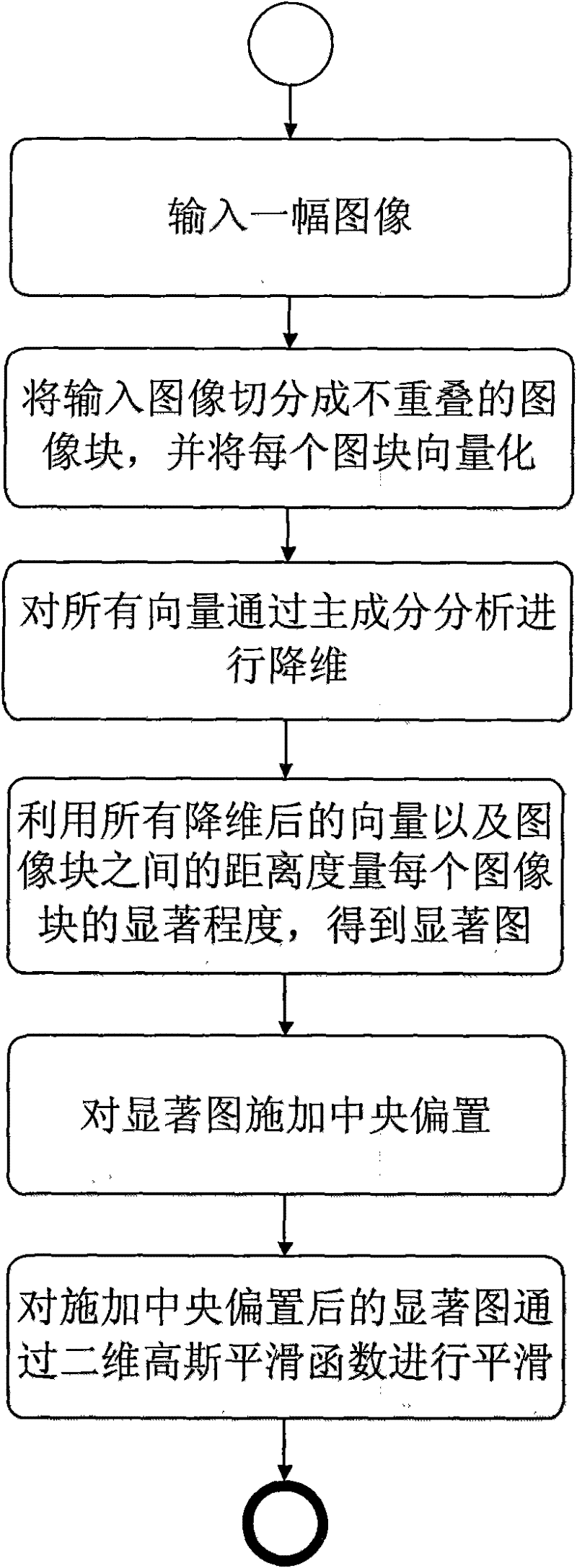Method for detecting degree of visual saliency of image in different regions
A detection method and technology in images, applied in image enhancement, image analysis, image data processing, etc., can solve problems such as computing bottlenecks and inability to understand scene changes, and achieve the effect of improving execution efficiency and avoiding the steps of feature selection
- Summary
- Abstract
- Description
- Claims
- Application Information
AI Technical Summary
Problems solved by technology
Method used
Image
Examples
Embodiment Construction
[0019] The present invention will be further described below in combination with specific embodiments.
[0020] Assume that a 3-channel color image I is input, and its width and height are W and H respectively.
[0021] First, in step 1, the image should be divided into image blocks and vectorized. Step 1 contains 2 sub-steps:
[0022] Step 1.1, divide the image I into non-overlapping image blocks p in the order from left to right and top to bottom i (i=1, 2, ..., L), each image block is a square, width and height are k (k2 , the total number of image blocks L=(W / k)·(H / k) that can be segmented from the image I. When the width and height of the image are not an integer multiple of k, the image needs to be scaled first to ensure that the width and height of the image are an integer multiple of k. Here, it is assumed that the width and height of the image after the size change are still represented by W and H respectively. (Does not affect the understanding of the following tex...
PUM
 Login to View More
Login to View More Abstract
Description
Claims
Application Information
 Login to View More
Login to View More - R&D
- Intellectual Property
- Life Sciences
- Materials
- Tech Scout
- Unparalleled Data Quality
- Higher Quality Content
- 60% Fewer Hallucinations
Browse by: Latest US Patents, China's latest patents, Technical Efficacy Thesaurus, Application Domain, Technology Topic, Popular Technical Reports.
© 2025 PatSnap. All rights reserved.Legal|Privacy policy|Modern Slavery Act Transparency Statement|Sitemap|About US| Contact US: help@patsnap.com



